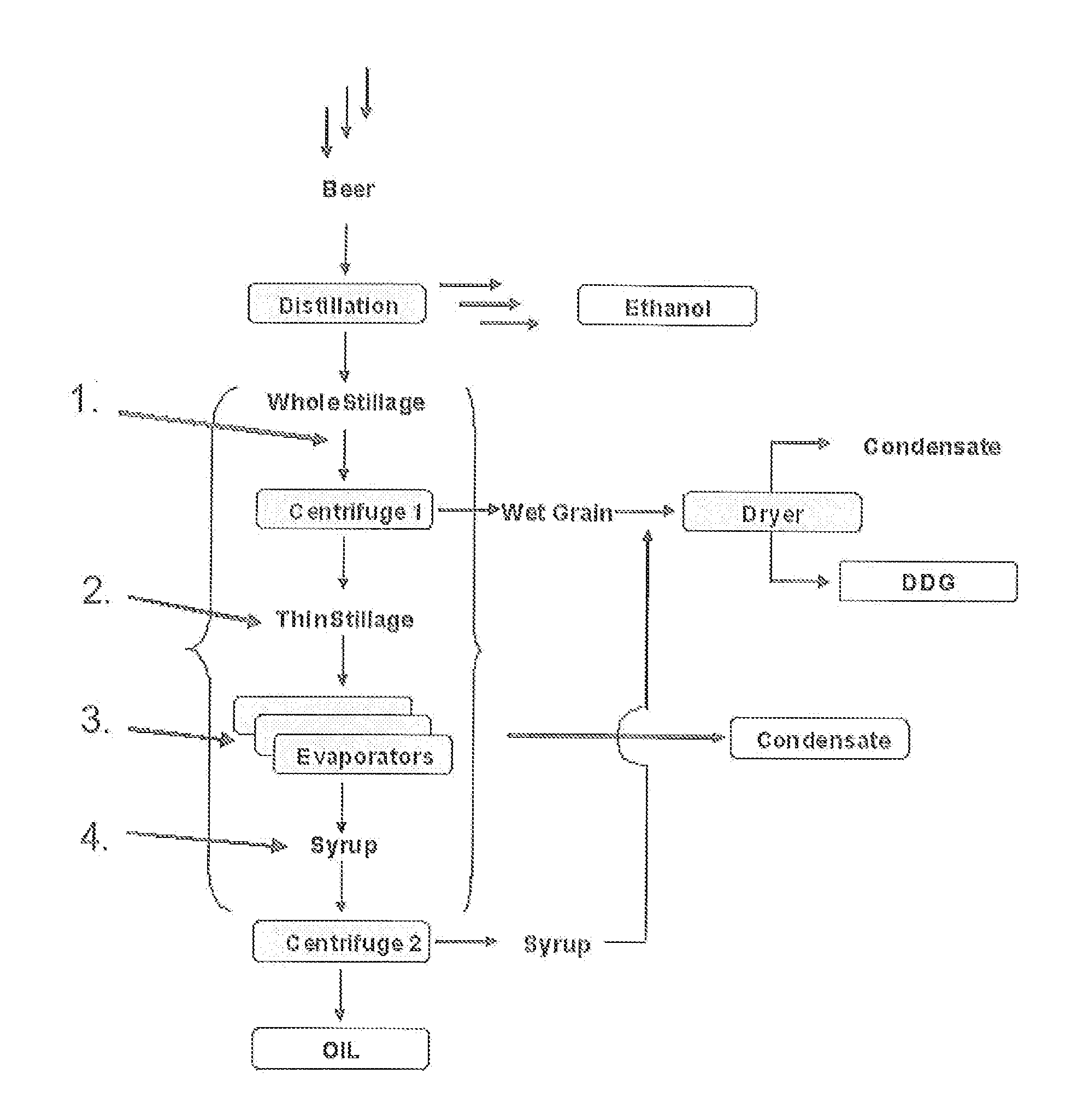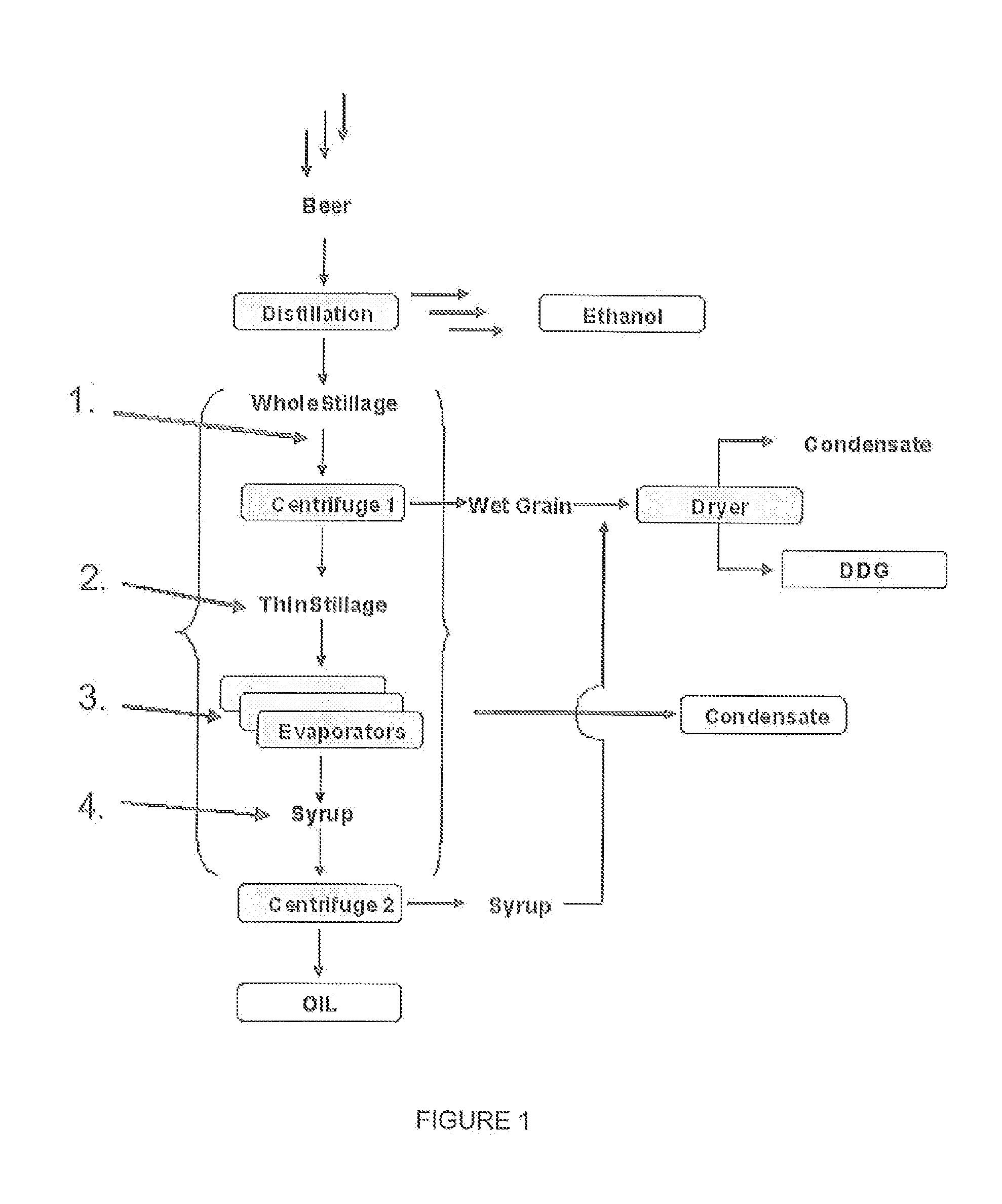Chemical additives and use thereof in stillage processing operations
a technology of additives and stillage processing, applied in the field of recovery of oil, can solve the problems of many commercial installations falling short, and achieve the effects of reducing the need for outages and cleanings, reducing the amount of deposited materials, and high quality
- Summary
- Abstract
- Description
- Claims
- Application Information
AI Technical Summary
Benefits of technology
Problems solved by technology
Method used
Image
Examples
example 1
[0030]Ashland PTV M-5309, an monolaurate ester of ethoxylated (20 moles) sorbitan was added at dosage of 611 ppm into the syrup feed line on the inlet side of the pump feeding a disk stack centrifuge at a mid-West corn to ethanol producer to yield an approximately 29% increase in corn oil output (from approximately 1.7 gpm before treatment to approximately 2.2 gpm after treatment). In addition, the suspended solids content of a 50 ml aliquot of the isolated oil after centrifugation in the laboratory was observed to drop from ˜4 ml to ˜1 ml after treatment.
[0031]Table 1 summarizes a dose response for two 4-hour trials, and a result of a 5-day trial, conducted at different time frames at this site. The noted amount of Ashland PTV M-5309 is on a product basis relative to the syrup feed. For the 4-hour trials the data reported is the oil production rate after the system had equilibrated relative to the untreated production rate (0 ppm) at the initiation of the trial. For the 5-day trial...
example 2
[0032]This field trial examined the difference between adding 680 ppm of Ashland PTV M-5309, an alkoxylated sorbitan ester, to the syrup stream at a mid-West corn to ethanol producer at different addition points. One of the addition points was the inlet side of the pump feeding a disk stack centrifuge as in Example 1. The other addition point examined was after the pump and directly into the inlet of the disk stack centrifuge. Relative to the untreated daily oil production rate just prior to the trial an increase in daily oil production of approximately 15% and 17% was measured after treatment, respectively.
example 3
[0033]This field trial was similar to Example 1 except 690 ppm of Ashland PTV M-5309 was added to the syrup stream at a mid-West corn to ethanol producer at the inlet side of the pump feeding a horizontal tricanter centrifuge. Upon treatment the oil production rate was observed to increase by approximately 45% relative to the untreated production rate at the initiation of the trial.
PUM
 Login to View More
Login to View More Abstract
Description
Claims
Application Information
 Login to View More
Login to View More - R&D
- Intellectual Property
- Life Sciences
- Materials
- Tech Scout
- Unparalleled Data Quality
- Higher Quality Content
- 60% Fewer Hallucinations
Browse by: Latest US Patents, China's latest patents, Technical Efficacy Thesaurus, Application Domain, Technology Topic, Popular Technical Reports.
© 2025 PatSnap. All rights reserved.Legal|Privacy policy|Modern Slavery Act Transparency Statement|Sitemap|About US| Contact US: help@patsnap.com


